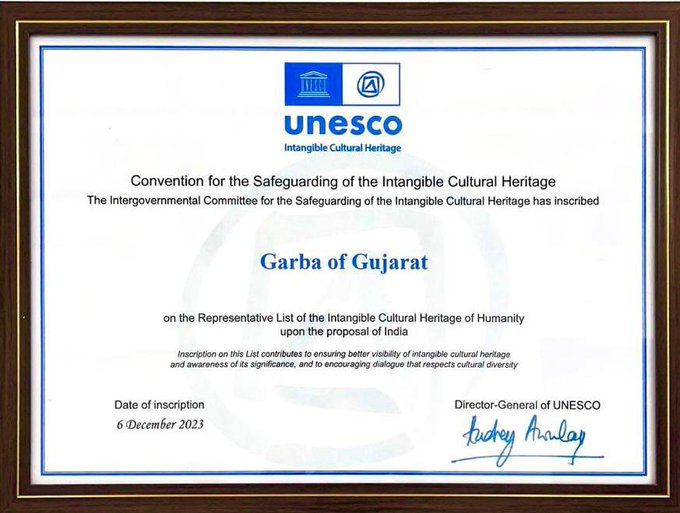In a recent development that has brought joy to the Indian community worldwide, the traditional Gujarati dance form, Garba, has been recognized by the United Nations Educational, Scientific and Cultural Organization (UNESCO) as an Intangible Cultural Heritage.
The Prime Minister of India, Narendra Modi, expressed his delight over this recognition in a tweet. He stated, “Garba is a celebration of life, culture, and devotion. It also brings people together. It is gladdening to note that Garba’s global popularity is on the rise!”
Garba, a folk dance from the Indian state of Gujarat, is performed during the nine-day Hindu festival of Navaratri. It is a circular form of dance that symbolizes the cyclical nature of life, where the only constant is the Goddess Durga (also known as Amba).
The Prime Minister further added, “Sometime ago, Garba found a place in the @UNESCO Intangible Cultural Heritage list. I am glad that the Certificate of Inscription was presented a few days back in Paris.”
This recognition by UNESCO underscores the global appreciation for Garba and its significance in promoting unity and harmony. The dance form, which is steeped in devotion and festivity, has transcended its regional identity to become a global phenomenon.
In celebration of this recognition, a memorable Garba Night was held in Paris, which saw enthusiastic participation from the Indian community. The event served as a testament to the dance form’s growing popularity and its ability to bring people together, irrespective of geographical boundaries.
The recognition of Garba by UNESCO not only honors the rich cultural heritage of India but also highlights the universal appeal of its traditional arts. As the world becomes increasingly interconnected, such recognitions play a crucial role in fostering cross-cultural understanding and respect.



